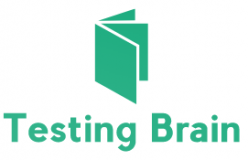Advantages of Maven,Disadvantages , Maven PDF Tutorials
What is Maven: Apache Maven is a tool used in software project management. It mainly aimed for Java related projects.
- Helps in working on a project that is done easy and faster
- This maven projects can be communal to other team of maven projects.
- It helps to give information about the project in the form of log document, dependency list and so on
Maven is a comprehension tool and software project management basically used with Java-driven projects and can also be used to manage projects in other programming languages such as Ruby and C#. In Yiddish, the word Maven means “accumulator of Knowledge”. The Maven project is accommodated by the Apache Software Foundation, where it was in time past component of the Jakarta Project. Maven helps manage documentation, builds, reporting, software configuration management (SCM), dependencies, distribution and releases.
Jason Van Zyl created Maven in 2002 as part of the Apache Turbine project. But in 2003, it became an Apache Software Foundation project. Many versions of Maven were released after that; these include Maven v1.0, v2.0 and v3.0.
Project Object Model (POM) is the basic unit in Maven. Maven’s functionality also depends on plug-ins, which create a group of goals that can be implemented. Essentially, all work is carried out by plug-ins. There are many Maven plug-ins for testing, building, running a Web server, SCM etc. Plug-ins are arranged in the POM file, where some primary plug-ins are added by default.
Configuration for the task is provided by the user when using Maven, while the configurable plug-ins do the real job of cleaning target directories, generating API documentation, compiling the project, running unit tests etc. Generally, plug-ins are not supposed to be written by users.
Many integrated development environments (IDEs) provide add-ons or plug-ins for Maven, hence enabling it to compile projects from within the Integrated Development Environment (IDE).
Characteristics of Maven
- Maven is a standard, simplified way to build projects in which unwanted details are hidden
- It is a consistent build system, wherein a standard method is adhered to when developing any project
- It is made of Quality project information, such as unit test reports, cross referenced sources and dependency lists
- It has the ability to handle multiple projects at the same time.

- Better Dependency Management: Here no need to worry about transitive dependencies. Maven excels in this as it is popular among many users and also easily accessible and easy to use without any discomfort. When the user depend on one of thousands or hundreds of projects, then here comes the role of Maven to make to work on multiple project easily. Maven has high degree of domination and support.
- More powerful builds: Maven’s default plugins and life cycle allow a project to perform common build actions without touching a build configuration file. One can also clean the files and form a class files from the project. They also help in generating Javadoc for the project and also help to analyze any discrepancies that happen in the project.
- Once the maven is being purchased, then n number of person can use it and later it can be reused also. It also gives you the confidence that you have adopted the best practice in the entire industry.
- When using Maven, it is simple to create an element and combine it to a single project.
- Maven projects are easily maintainable as they have scanty wonder and go on the same and single process.
Disadvantages:
- Study achieves are not safe always.
- Learning maven is long and time consuming in comparison with ANT.
- If in a project Maven is not used properly then there will be chances for more duplication.
